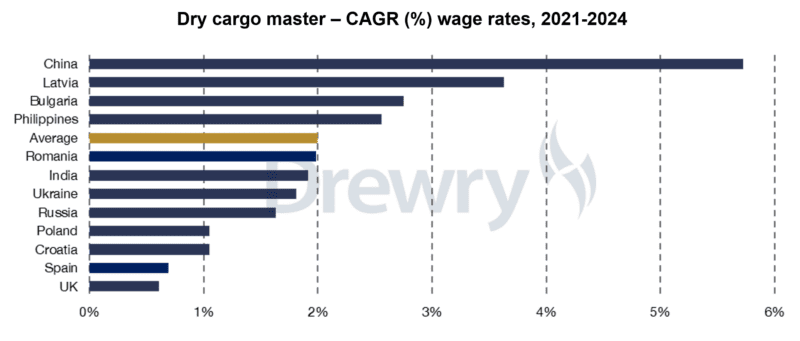UK Strikes at Heart of Russia’s Arctic Energy Empire
New maritime services ban threatens to sever lifeline for Yamal LNG exports By Paul Morgan (gCaptain) – In the frozen waters above the Arctic Circle, a fleet of specialised ships...

by Captain John Konrad (gCaptain) For decades, American merchant mariners have been in a state of stagnation. Despite their crucial role in U.S. shipping and national security, wage growth and working conditions have barely improved. While some progress has been made in contract negotiations, most gains have not kept pace with inflation. Unlike the more assertive longshoreman unions, American maritime unions, which are supposed to advocate for mariners, have refused to strike—even with the most pro-union president in recent memory.
While American mariners still earn more on average than their foreign counterparts, the once enormous wage gap is rapidly shrinking.
In stark contrast, China has been rapidly advancing. Increased wages, a growing seafaring workforce, and a government that recognizes the strategic importance of maritime labor have positioned Chinese mariners for success. According to Drewry’s Manning Annual Review and Forecast, China has seen the strongest wage growth of any seafaring nation.
The United States doesn’t even show up on the scale of the top 13 nations for wage growth:

China now ranks as the second-largest supplier of seafarers for international merchant shipping, making up around 11% of the global maritime workforce. But it’s not just about numbers—Chinese officers are increasingly finding jobs on international vessels, and skilled ratings enjoy higher-than-usual wage hikes. The competition for skilled labor between the maritime and onshore sectors has driven wages up significantly.
The Drewry report highlights that Chinese dry cargo masters have experienced wage growth exceeding 5%, in stark contrast to decades of mostly stagnant wages for many American mariners. China’s booming economy continues to fuel demand for maritime workers, while the US shrugs off investment in short sea shipping or expansion of the Jones Act fleet.
American mariners have been treading water, trapped in a system that has failed to keep up with global changes. Complacent unions and a reluctance to push for meaningful reforms or call for strikes have left them with little leverage. As Chinese mariners enjoy higher wages and increased opportunities, U.S. mariners face an aging workforce and stagnant prospects.
The situation for American mariners has serious national security implications as China has militirized their mariners and as U.S. Navy’s Military Sealift Command (MSC) considers sidelining up to 17 support ships due to a shortage of qualified merchant mariners, according to a report from USNI News. This “force generation reset” plan would place the ships into extended maintenance, reallocating their crews to other vessels and reducing the demand for mariners by as many as 700 positions. Among the ships affected are two Lewis and Clark-class replenishment ships, a fleet oiler, twelve Expeditionary Fast Transports (EPFs), and two forward-deployed expeditionary sea bases that play crucial roles in U.S. Central Command, European, and Africa Command operations. While some MSC positions – like junior officers – have seen major pay increases, others like master have hit pay ceilings.
As China surges ahead with a growing and better-paid maritime workforce, the U.S. struggles to find enough mariners to staff its critical support fleet—further illustrating the growing disparity between the two nations’ maritime capabilities.
If the U.S. wants to stay competitive in global shipping, the system needs a complete overhaul—from training to union representation. Unions should be willing to strike to get wages in line with longshoreman unions. Without action, the gap between American mariners and their global counterparts, particularly in China, will only grow. The clock is ticking, and continued inaction risks leaving the U.S. maritime workforce irrelevant.

Sign up for gCaptain’s newsletter and never miss an update

Subscribe to gCaptain Daily and stay informed with the latest global maritime and offshore news
Essential news coupled with the finest maritime content sourced from across the globe.
Sign Up